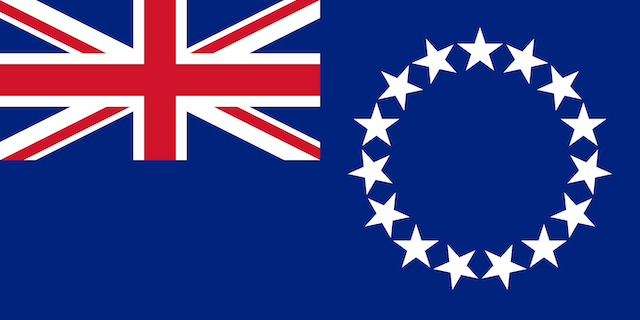Cook Islands - Facts
Cook Islands FAQs
Pre-Arrival – Boat: Cook Islands Customs and Biosecurity require an Advance Notice of Arrival which must be lodged at least 48 hours prior to arrival. See Clearance for details.
Pre-Arrival – Crew: All international visitors receive a 31 day visa on arrival. See Immigration for details.
Where can I enter? Vessels must enter through designated Customs Ports. Currently, the only open ports are Rarotonga (Avatiu Wharf) and Aitutaki (Arutanga Port). All other ports are closed including Suwarrow Island. However, it is possible to arrive at Penhryn/Tongareva (a Non – Customs Ports of Entry) but prior authorization MUST be granted by Customs Officials BEFORE arriving there. See Clearance for details.
Are fees high to enter by yacht? Customs, Health and Immigration all charge fees which are higher on weekends. See Fees for current information.
What security concerns should I know about? A safe and secure paradise but it is always good to stay aware. See Security for more information.
Cook Islands Facts for Sailors
- Cook Islands is located between French Polynesia and American Samoa and it comprises 15 islands spread over an area of over half a million square miles of ocean. Avarua is a town and district in the north of the island of Rarotonga, and is the national capital.
- The Southern Group, of which Rarotonga is the main island, also comprises Aitutaki, Atiu, Mitiaro, Mauke, and Mangaia. These are high and fertile and most of the 17,500 inhabitants live there.
- The Northern Group are the low coral atolls of Penrhyn, Manihiki, Rakahanga, Pukapuka, Nassau and Suwarrow, which is a national park. Also part of the Cooks are the atolls of Manuae, Takutea and Palmerston Island.
- The official languages are Cook Islands Maori and English. English is widely spoken on the island of Rarotonga, while Cook Islands Maori is predominantly used in the outer islands (Pa Enua).
- The Cook Islands unit of currency is the New Zealand dollar. For specifics see General Info.
- Cook Islands’ time is GMT-10 hours.
- The climate is pleasantly warm and sunny all year round with June to August being the cooler months. See Weather for more details.
- As most yachts sail to the Cook Islands from the east, a good time to plan one’s passage is after the 14 July celebrations in Tahiti are over, as the first week of August is the time when the Cooks put on their own festivities around Constitution Day. Most of the action is in Rarotonga, but the other islands can be visited afterward.
- Aitutaki is a popular stop and yachts are always assured of a warm welcome there. This is the case in all of the Cook Islands and as elsewhere in the Pacific, the more remote the island the more enthusiastic the welcome.
- Repair facilities and services for yachts are limited to Rarotonga. See Yachting Essentials for more details.
- Be aware that the fee structure for visiting yachts took a big price hike in 2015. See fees for more details.
Read and Post Related Comments
If you have information for this section, or feedback on businesses used, please let us know at editor@noonsite.com. We also welcome new information about businesses you have used (see Related Businesses).
Next Section: Profile: Security
Related to following destinations: Cook Islands
Country Navigation
Courtesy Flag Discounts


YachtFlags.com provides high quality courtesy flags that are manufactured in durable Knitted Polyester fabric. Knitted so that the fabric itself does not deteriorate in the constant movement that marine flags are usually exposed to, and polyester so that the flag does not weaken in the strong UV-light usually found in the main sailing areas of the world.
YachtFlags.com offers a discount to Noonsite members.
Use the coupon code NOONSITE-5A2B when checking out to get 10% off today.
Buy Now On YachtFlags.comMain Ports - Cook Islands
Courtesy Flag Discounts



YachtFlags.com provides high quality courtesy flags that are manufactured in durable Knitted Polyester fabric. Knitted so that the fabric itself does not deteriorate in the constant movement that marine flags are usually exposed to, and polyester so that the flag does not weaken in the strong UV-light usually found in the main sailing areas of the world.
YachtFlags.com offers a discount to Noonsite members.
Use the coupon code NOONSITE-5A2B when checking out to get 10% off today.
Buy Now On YachtFlags.comFormalities
Courtesy Flag Discounts



YachtFlags.com provides high quality courtesy flags that are manufactured in durable Knitted Polyester fabric. Knitted so that the fabric itself does not deteriorate in the constant movement that marine flags are usually exposed to, and polyester so that the flag does not weaken in the strong UV-light usually found in the main sailing areas of the world.
YachtFlags.com offers a discount to Noonsite members.
Use the coupon code NOONSITE-5A2B when checking out to get 10% off today.
Buy Now On YachtFlags.com





Why does this information conflict with the official government site linked to in the document and where does the Noonsite information come fom. The formalities here state that there are only two ports of entry, while the government site shows 8 ports of entry. The Cook Island Port authority also agrees with the Cook Island government site. Is this outdate Covid information?
Dear Wray,
Firstly, thanks for joining Noonsite and for making contact with us.
When reviewing formalities for any country, please take a look at the “last updated” date. Each clearance section has this. You will see the Cooks were updated last month.
All our formalities are checked with official sources. Official websites can often be out of date, very much the case with the Cooks. We always verify with the authorities themselves to get the latest “from the horses mouth”.
The Cooks Islands Customs department confirmed with us just last month that only 2 ports of entry are open for small craft at this time – full details in the Formalities section – https://www.noonsite.com/place/cook-islands/view/clearance/.
Of course, information does go out of date quickly and things are always changing, so do drop us a line if you want to double check information on the site at any time.
And it goes without saying, that a quick email, or posting a comment on the country page, to confirm the formalities were as outlined on Noonsite (or not, should this the be the case), is a HUGE help for us.
If I can be of further assistance – just let me know.
Sue
Palmerston Island Government with its multi-agency partners will be implementing a rat eradication project in July and August 2023. The bait laying phase of the project will take place during the month of August and the Palmerston Island Government has imposed a restriction on visitors to Palmerston during this month. Ships and sailing vessels (small crafts) are restricted from calling into Palmerston during this period until the restriction is lifted.
It is no longer possible to clear into the Southern Cook Islands at Palmerston Island. All yachts must first clear at an official port of entry before proceeding to Palmerston. Landing fees on the island have also increased from NZ$5 to NZ$10 per person. Cruisers should also note that Suwar-row in the Northern Cook Islands is closed until June 1st, 2023.
From Brent Crack and Mary Bevan:
The people of Rarotonga are so friendly and welcoming. Feels much like Rapa Nui or Pitcairn. Bananas have already been delivered without being asked for.
The yachting facilities/infrastructure absolutely sucks. They are not set up in any way for us. Oh well.
We had planned to stay longer but have a weather window straight to New Zealand so we will leave today.
AITUTAKI. Dredging has started to improve the entrance and Channel to the harbour. When finished, it will be 5m deep and 15m wide. The south and north basin either side of the wharf, will be 4m deep. The north basin will be for visitors. The south basin will provide space for local boats and visitors. Initially, visitors will anchor and tie back. When funds are available, moorings and shore facilities wil be provided.
The Cook Islands Ministry of Transport and sports and Tourism will publish correct marine information relating to access as more details are known mid-2022.